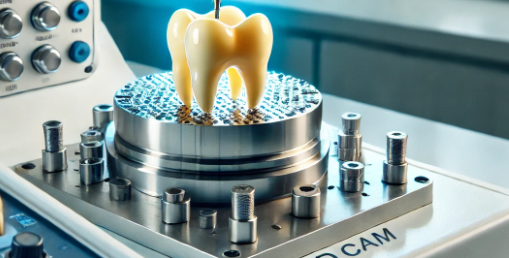Dental CAD/CAM technology is an advanced process that allows for the rapid, precise, and safe creation of dental restorations without the need for traditional impressions and weeks of waiting.

It all begins with a digital scan of the patient's teeth, the first step in creating the perfect crown or bridge. Instead of uncomfortable impression materials, an intraoral scanner captures a three-dimensional image of the patient's jawbone with astonishing precision in just seconds. This digital impression eliminates the possibility of errors and allows dentists to clearly understand the current condition of the teeth.
After the scan, the design phase begins with CAD (Computer-Aided Design) software. This procedure allows dentists to instantly sculpt the future crown or bridge, taking into account the patient's anatomy, tooth color, and aesthetic requirements.
This stage offers incredible control over the final result, as every detail can be adjusted to perfection before production begins. Patients can even see a simulation of their new smile before the restorative work is performed.
The next step is the CAM (Computer-Aided Manufacturing) stage, where the designed crowns or bridges enter the manufacturing process.
With the aid of high-precision milling machines, the prosthetic restorations are made from high-quality materials such as ceramics, zirconium, or lithium disilicate. These materials ensure durability, biocompatibility, and superior aesthetics because their properties faithfully mimic natural teeth.
Once fabricated, the crowns are further processed and adjusted to fit the patient's dimensions. In the final stage, the dentist bonds them to the teeth, adjusts the bite, and ensures a perfect fit to the jawbone. All of this can be completed in a single visit, saving patients time and allowing them to achieve a functional, radiant smile in record time.
CAD/CAM technology in dentistry is more than just an innovation—it's a revolution combining science, art, and technology to create the perfect smile!